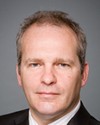I'd be happy to add a bit more detail there.
When we did the analysis for a site for this pilot project on the east coast of Vancouver Island and were looking from the Oyster River area, just south of Campbell River, all the way to Port Hardy, why did only 2 out of 16 identified areas make the grade?
There are a couple of reasons for that. First of all, I'll piggyback on what Dan said a moment ago about there being no standardization. In talking to the suppliers of the technology, there was quite a variety of water requirements quoted by different groups, ranging from 600 gallons a minute to 1,000 gallons a minute and greater than that. Some required 5,000 gallons a minute. We were also looking at a pilot that could incorporate marine water as well as freshwater. We had to look for locations where there was a likelihood of our being able to access both freshwater and marine water, and in those same kinds of volumes—maybe as high as 5,000 gallons a minute, depending on the specifications of the group we were looking at.
From the information that was available on the aquifers, there was no salt water available near many of them—although there was freshwater. In some of the freshwater locations, there was known to be heavy metal contamination. It was not so much that your human population would suffer, but it was too much for your fish to live in, day in and day out. So these locations dropped off the list. We came down to two locations that appeared to have adequate freshwater volume and quality without these contaminants. We still don't know about the marine water. We'd have to actually do some drilling and pump testing to find out if salt water is available at the levels required.
Hopefully that answers, to some degree, the survey part of your question.
The second part of your question was whether we could pick up water from an urban source. You touched on the major concern, which is that if it's fluoridated or chlorinated for the benefit of people, we can't use it—not without incurring more expenses to remove those additives. As Dan said, we have the technology to do it anywhere. It just depends on what the costs are based on the challenges you're facing at a particular location. To set up in Vancouver, for example, we'd have to put something on the front end, if they're still treating the water, to remove those additives before we could put it into the fish.




